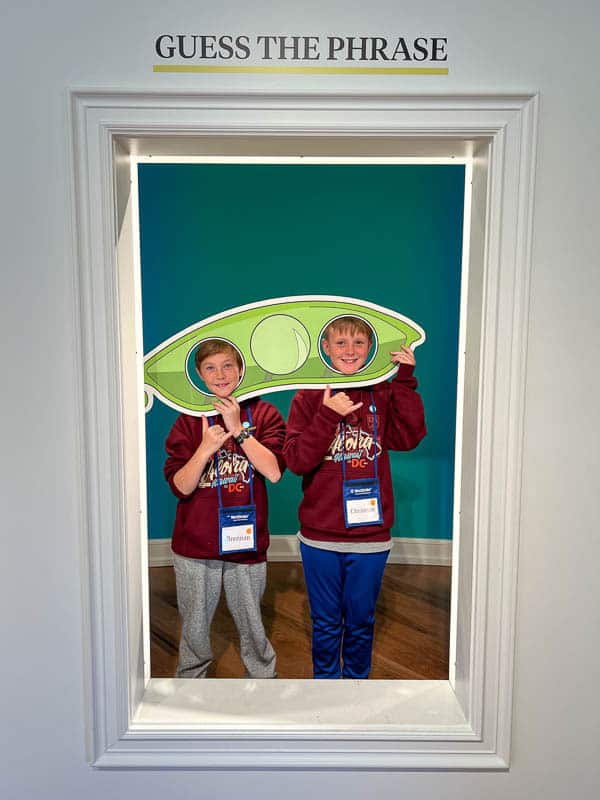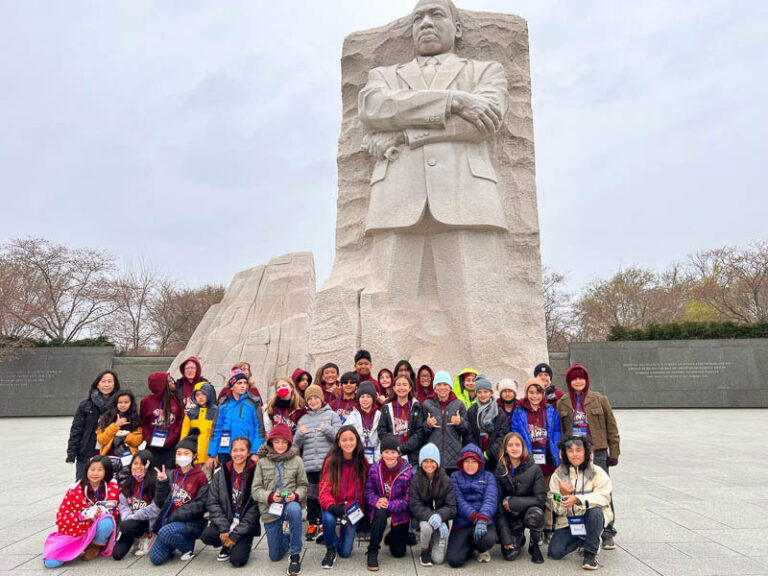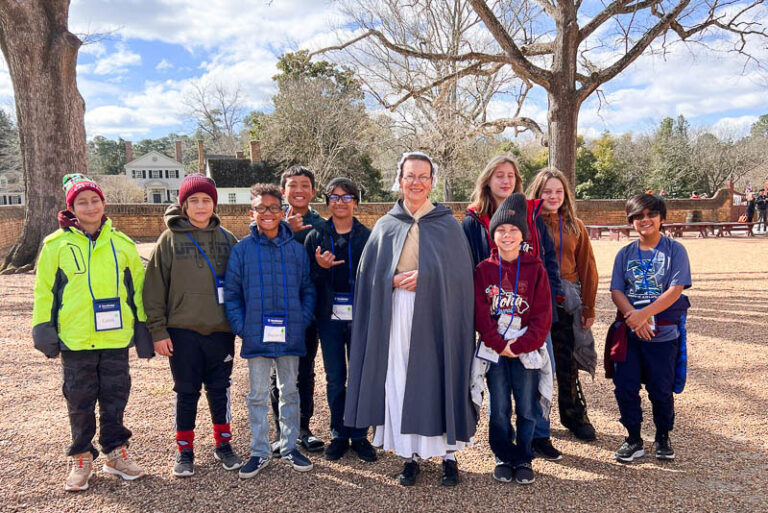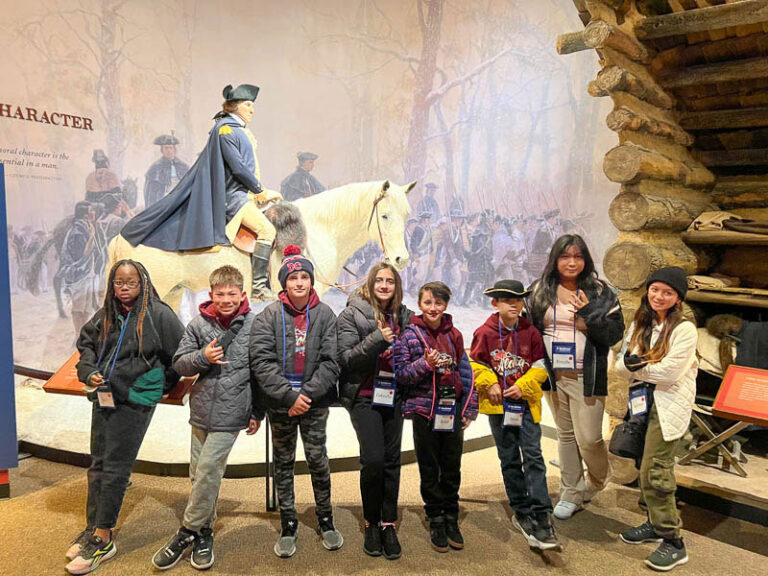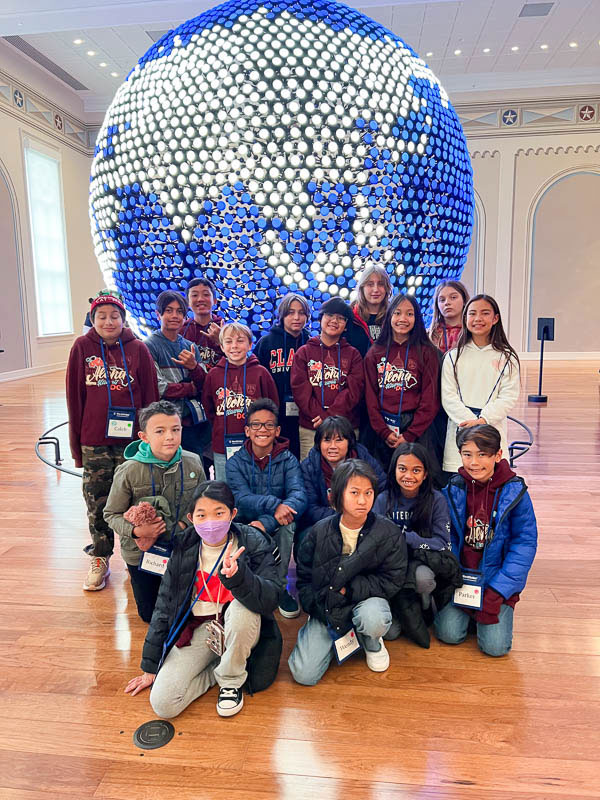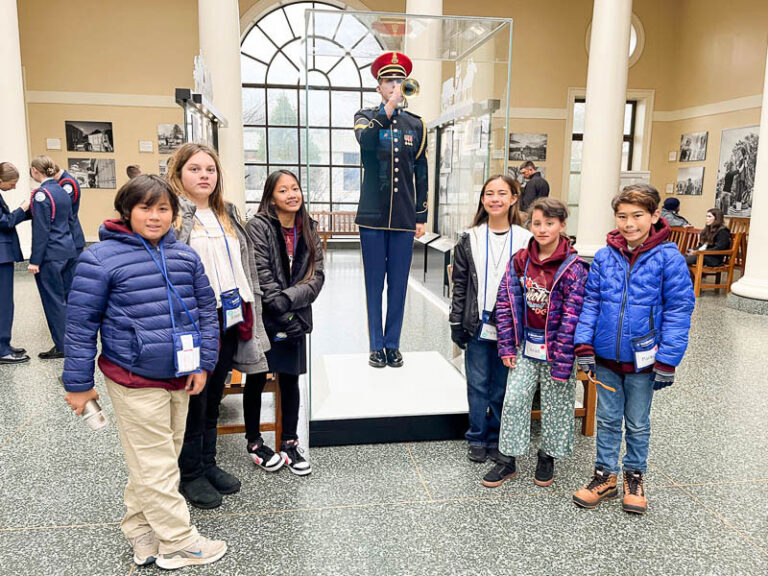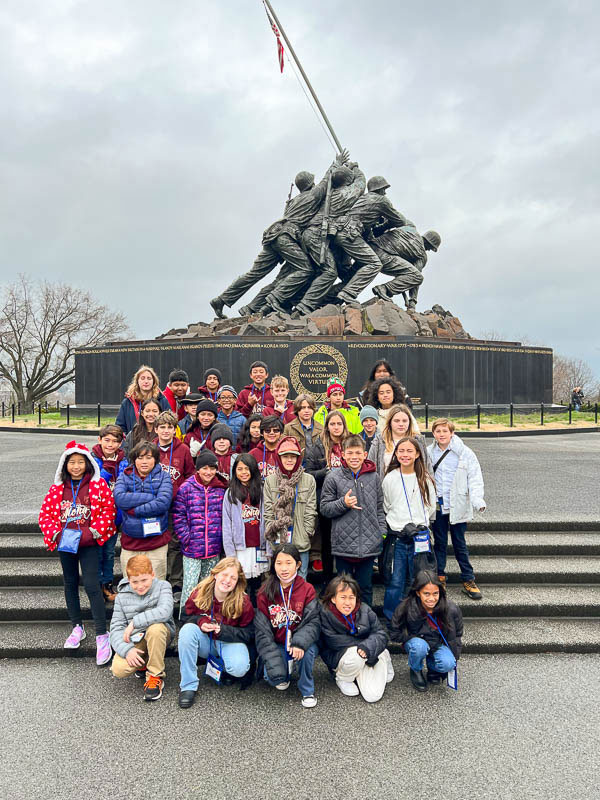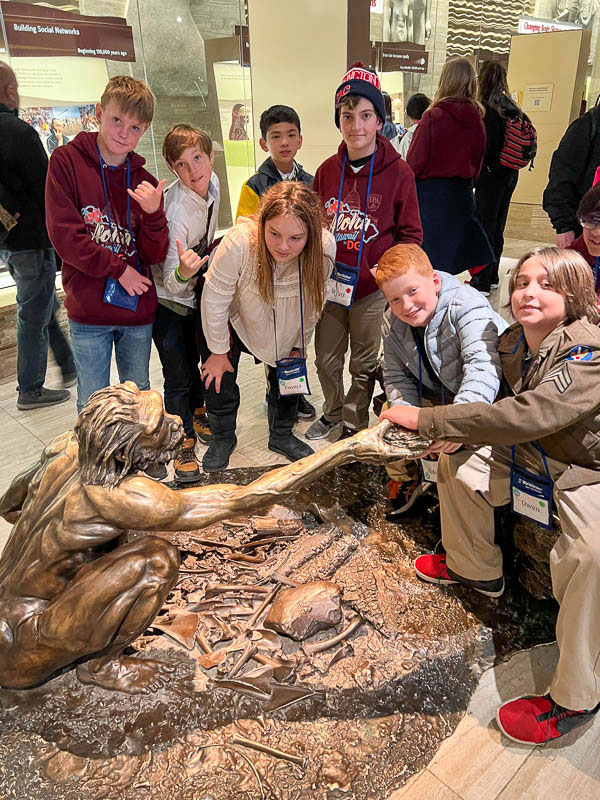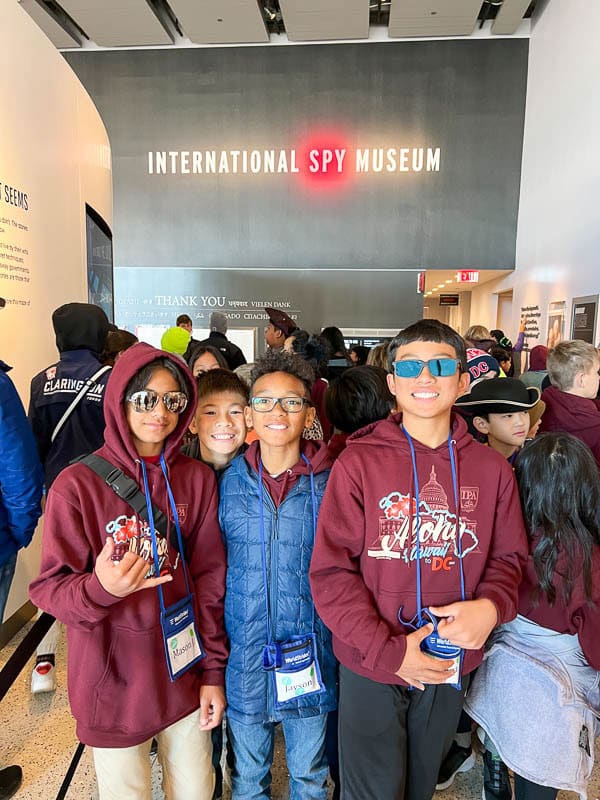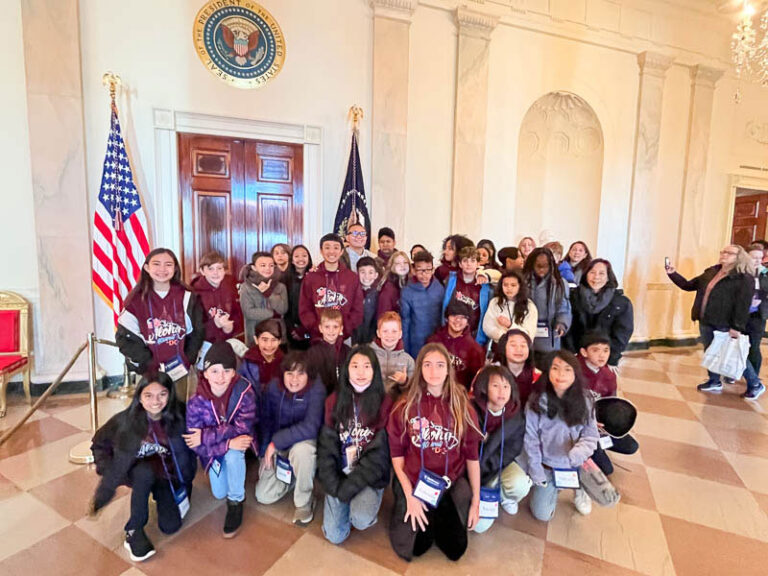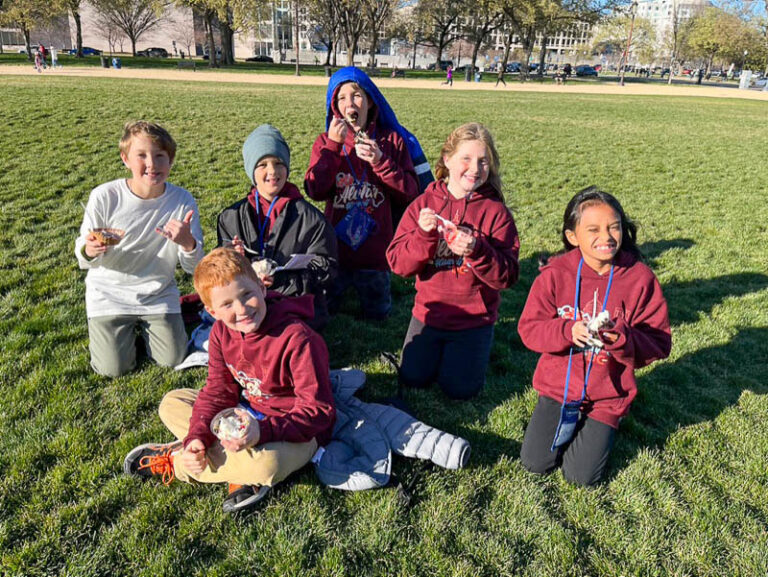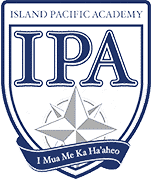On March 16, 2023, 34 very excited ISLAND PACIFIC ACADEMY students in Grades 5 and 6 hugged their parents goodbye before embarking on an exploration of the nation’s capital to learn more about the birthplace of American democracy. They were accompanied by Grade 5 teachers, Lisa Uesugi and Joe Villaluz, and supporting chaperones Kerri Vincent, elementary office manager, and Steve Ross, assistant head of school. The teachers, along with Elementary Curriculum Coordinator Darci Asato-Garcia, spent months preparing for and coordinating this once-in-a-lifetime trip for the students.
The two-week learning trip to Washington, D.C. was a sort of field research for their project-based learning (PBL) on the American Revolution, and prepared them to answer the driving question, “How do we as artists create a museum experience that connects our community with the people and events of the American Revolution?” Through their PBL, the students learn about the American Revolution and then follow their passions to create a museum experience that meaningfully demonstrates their learning.
The whirlwind trip took them to some of the country’s finest museums, presenting opportunities to learn not only about various subjects, but also about what makes a great museum experience.
Sophia ‘30 learned about how museums organize their collections by categories, and will use that knowledge with her peers to help develop their own museum.
“For our museum, in one room we’re going to have about the guns and the weapons, and then another room about art, and another room the people,” she explained.
Christian ‘30 learned at Planet Word Museum about the optimal length of text for keeping a reader’s interest, which may help him and his classmates as they create display descriptions for their exhibits.
“We learned about how many words is the best,” he shared. “A scientist did this experiment where it was like 5 words and then there was like 120 and there was 60 and more people read the 60 words.”
One of the many museums the students visited was the Smithsonian National Museum of American History, where they learned about the events leading up to the Revolution and saw some of the artifacts from the Revolutionary War, including muskets, uniforms, and other objects used by the soldiers during that time. And at the National Archives, students saw the original documents that formed the foundation of the United States, including the Declaration of Independence, the Constitution, and the Bill of Rights, and learned about their significance in American history.
“This learning goes back to third grade,” explained Asato-Garcia. “A lot of the things that they learned in third grade [in their Democracy unit] – the preamble, the constitution, the presidents – they remember it going into fifth grade so it’s meaningful for them to see it in person.”
The students also got to experience the immersive living history museum at Colonial Williamsburg, the capital of Virginia when America’s independence was taking shape. American history came to life for them through interactive, authentic 18th-century experiences with the places and artisans of the time that helped them better understand the events and people of the American Revolution.
“I think Hawaiʻi kids in particular, because of the way we live here, feel disconnected in some ways when you’re talking about colonial life,” shared Uesugi. “They have a hard time making those kinds of connections until they are there and they can see it for themselves.”
For Sophia, imagining what a colonial prison was like, for example, was hard for her.
“So actually going there and seeing the physical prison, like what it looked like inside, was helpful,” she explained. “I think also the people acting it out, I took it as how can I improve, because I can talk to someone but, like, how do I do it in a way that they can understand? How can I talk about crossing the Delaware River? How do I make younger kids understand?”
These types of connections, relevant knowledge, and excitement are what the teachers had hoped for their students to experience.
“There’s no way you can get that kind of excitement from a textbook,” shared Villaluz. “You can read a textbook or you can show stuff on YouTube, but when you’re in the actual places it’s huge for the kids, so I think that’s the tie-in, even for a teacher to be able to see the stuff.”
“I think they’re making better connections for sure,” said Asato-Garcia. “The first brainstorm that they did, they would say ‘Oh remember when we went to Williamsburg we saw this’ or, because we’re actually doing recipes, they wanted to call it a tavern because they heard that name. So they’re remembering things from the trip and that’s cool.”
And all of the museums and monuments the students saw and experienced on the trip provided them with a deep pool of ideas from which to choose for their projects.
“I think the depth of knowledge is different for them because they have that connection to the sites, to the materials, and they will talk about it within their groups,” explained Uesugi. “I don’t know if their exhibits necessarily will be that much different from [previous years’ projects], because I think the kids always do the best that they can do, but the amount of knowledge they can choose from is there.”
Throughout the trip, the teachers and students talked about how the things they were learning were related to their PBL projects, and the students journaled every day about what they had seen and experienced.
“The students have their handwritten journals, and it’s good for them to be able to go back and see. We’re hoping that the reflection comes as they’re working towards their PBL, the American Revolution museum,” said Asato-Garcia.
One of the things everyone agreed was the best part of the whole experience was the students’ sense of newfound independence, embraced by the students and teachers alike.
“I think one of their big takeaways is being independent – staying in a hotel room with just your friends, getting to buy things in a gift shop without asking, and having to try different foods. For some of them, it was way out of their comfort zone,” said Uesugi.
“I told the kids this – half of it is content and the other half is their life skills, you know? How do you be independent, how do you use manners, how do you behave in a restaurant, how do you budget your money, or pack your own suitcase,” said Villaluz.
“The best part of the trip, other than the museums, was probably the experience like hanging out with your friends in the hotel room, like being more independent,” shared Sophia. “You can be at home and brush your teeth or whatever by yourself but with your parents around, but to be in DC away from home doing all these things by yourself, it’s a pretty big responsibility. Yeah, that’s responsibility and independence that I’m going to take away from this trip – but also having fun with friends.”



